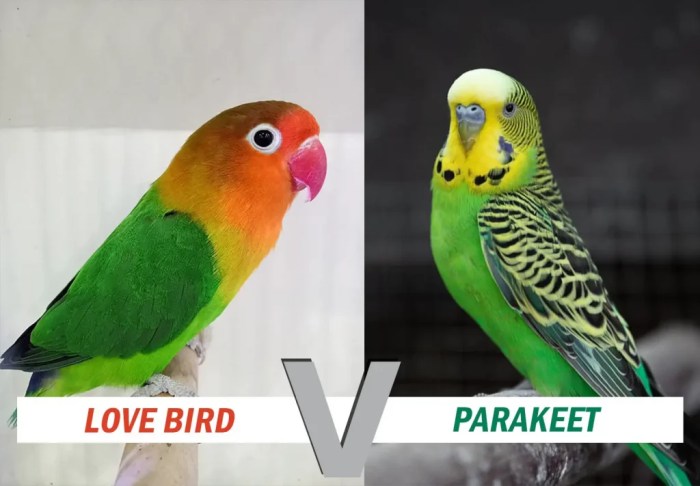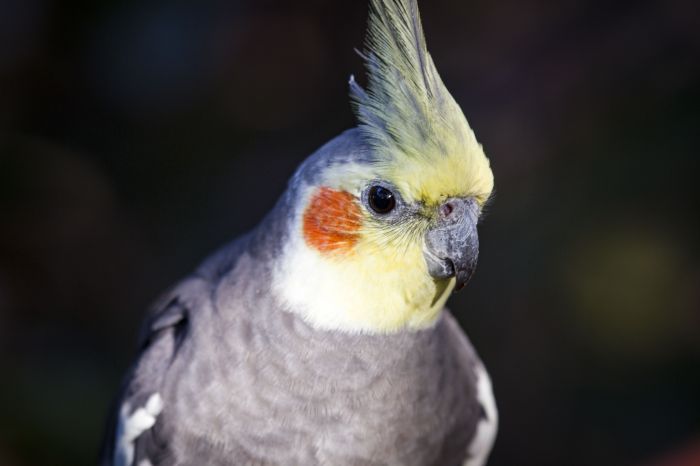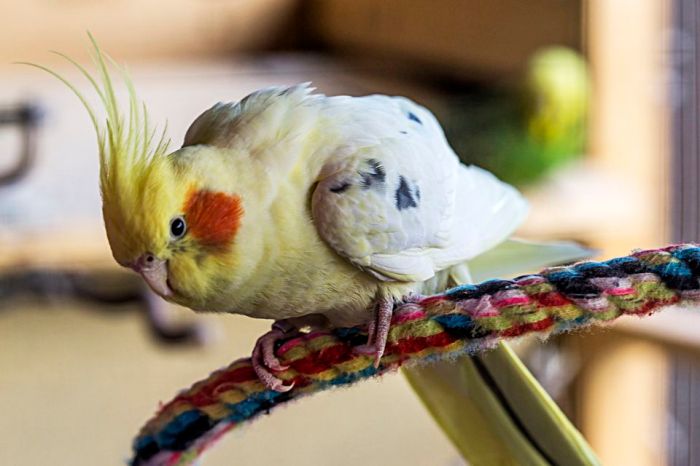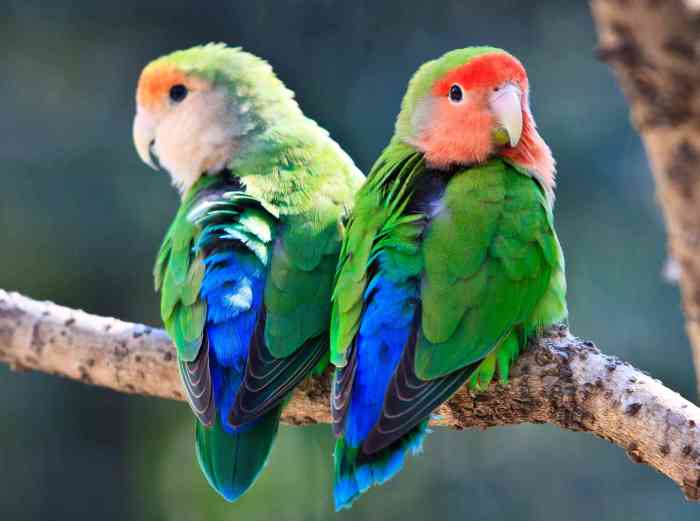Embark on a journey to find the perfect feathered companion with “How to Choose the Right Bird: 12 Popular Pet Bird Species.” Delve into a world where different bird species come to life, each with their unique traits and charms, promising an enriching experience for any bird enthusiast.
Explore the diverse selection of pet birds and learn how to make an informed decision based on their characteristics and needs.
Overview of 12 Popular Pet Bird Species

When choosing a pet bird, it’s important to consider the unique characteristics and behaviors of each species. Here is a brief description of 12 popular pet bird species along with their key characteristics and common behaviors:
African Grey Parrot
- The African Grey Parrot is known for its exceptional intelligence and ability to mimic human speech.
- They are highly social birds and require a lot of interaction and mental stimulation.
- These parrots can be independent and sometimes shy, but they form strong bonds with their owners.
Budgerigar (Budgie)
- Budgies are small, colorful birds that are popular for their playful and energetic nature.
- They are relatively easy to care for and can be trained to do tricks and mimic sounds.
- These birds are social and enjoy being part of a flock, including their human family.
Cockatiel
- Cockatiels are friendly and affectionate birds that are known for their crest and distinctive coloration.
- They are great whistlers and enjoy interacting with their owners through vocalizations.
- These birds are easy to tame and handle, making them a popular choice for first-time bird owners.
Lovebird
- Lovebirds are small, colorful parrots that are known for their strong pair bonds with a mate.
- They are playful and energetic birds that enjoy social interaction with their owners.
- These birds can be territorial and may exhibit aggression towards other birds or pets.
Cockatoo
- Cockatoos are large, affectionate birds that are known for their crest and playful nature.
- They are highly social birds and require a lot of attention and mental stimulation.
- These birds can be loud and demanding, but they form strong bonds with their owners.
Conure
- Conures are medium-sized parrots that come in a variety of colors and species.
- They are playful and active birds that enjoy interacting with their owners through playtime.
- These birds can be loud and vocal, but they are generally friendly and sociable.
Macaw
- Macaws are large, colorful parrots that are known for their impressive size and intelligence.
- They are playful and affectionate birds that require a lot of space and mental stimulation.
- These birds can be loud and demanding, but they can form strong bonds with their owners.
Parakeet
- Parakeets, also known as budgies, are small, social birds that are easy to care for.
- They are playful and curious birds that enjoy interacting with their owners through vocalizations.
- These birds can be trained to do tricks and are a popular choice for families with children.
Amazon Parrot
- Amazon Parrots are medium-sized parrots that are known for their colorful plumage and talkative nature.
- They are intelligent birds that require mental stimulation and social interaction.
- These birds can be loud and vocal, but they can form strong bonds with their owners.
Canary
- Canaries are small songbirds that are known for their melodic singing and vibrant colors.
- They are relatively low maintenance birds that enjoy flying and perching in a spacious cage.
- These birds are generally peaceful and do well in a quiet environment.
Caique
- Caiques are small to medium-sized parrots that are known for their playful and clownish behavior.
- They are energetic birds that require a lot of physical activity and mental stimulation.
- These birds are social and enjoy interacting with their owners through play and affection.
Fischer’s Lovebird
- Fischer’s Lovebirds are small, colorful parrots that are known for their playful and curious nature.
- They are social birds that form strong pair bonds with a mate.
- These birds are active and enjoy flying and playing with toys in their environment.
Considerations for Choosing the Right Bird

When selecting a pet bird, there are several factors to consider to ensure you choose the right species that fits your lifestyle and preferences. Factors such as size, lifespan, noise level, and maintenance requirements play a crucial role in deciding which bird species is best suited for you.
Dietary Needs of Different Bird Species
Different bird species have varying dietary requirements based on their natural habitats and nutritional needs. It is essential to research and understand the specific diet each species requires to ensure their optimal health and well-being. Here is a comparison of the dietary needs of some popular pet bird species:
- African Grey Parrot: Requires a balanced diet of fruits, vegetables, nuts, and seeds.
- Budgerigar (Budgie): Primarily feeds on seeds, supplemented with fresh fruits and vegetables.
- Cockatiel: Diet consists of seeds, pellets, and fresh produce like leafy greens and carrots.
Space and Housing Requirements for Various Bird Species
The space and housing requirements for pet birds vary depending on their size and activity level. It is crucial to provide adequate space for your bird to move around freely and exhibit natural behaviors. Here are insights on the space and housing requirements for some popular pet bird species:
Large birds like Macaws and Cockatoos require spacious cages with plenty of room to spread their wings and move around.
- Finches: Prefer aviaries or large cages with space for flying and socializing with other finches.
- Parakeets (Budgies): Need a cage with horizontal space for flying and vertical space for climbing and perching.
- Lovebirds: Enjoy cages with plenty of toys and perches for mental stimulation and exercise.
Interaction and Bonding with Birds

Building a strong bond with your pet bird is essential for their well-being and happiness. Birds are social creatures that thrive on companionship and interaction.
Tips for Bonding with Your Pet Bird
- Spending quality time with your bird every day can help build trust and strengthen your bond.
- Speak to your bird in a gentle and soothing voice to help them feel comfortable and secure in your presence.
- Offering treats and positive reinforcement can create a positive association with you and encourage bonding.
- Respect your bird’s boundaries and body language to ensure they feel safe and respected during interactions.
Training Techniques and Enrichment Activities
- Use positive reinforcement techniques, such as clicker training, to teach your bird new tricks and behaviors.
- Provide your bird with a variety of toys, puzzles, and foraging activities to keep them mentally stimulated and engaged.
- Rotate toys regularly to prevent boredom and encourage curiosity in your bird.
- Establish a routine for training sessions and enrichment activities to create consistency and structure for your bird.
Last Point

In conclusion, “How to Choose the Right Bird: 12 Popular Pet Bird Species” equips you with the knowledge needed to select the ideal avian friend. Whether you seek a chatty parrot or a serene canary, this guide ensures a fulfilling journey into the avian world.